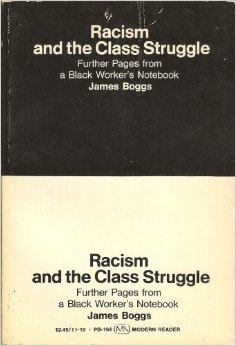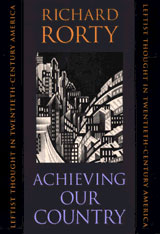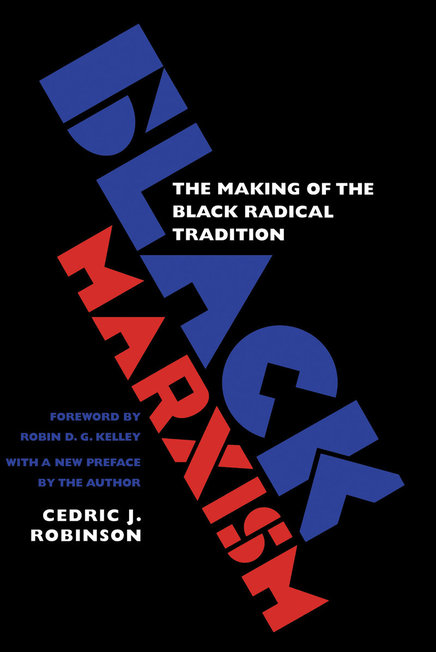“Tell no lies, claim no easy victories.”
Amilcar Cabral, Revolution in Guinea, 1974.
In the 1960s and 1970s, a Detroit autoworker, James Boggs, wrote a series of incisive essays that not only scientifically analyzed the intersection of race and capitalism in the United States of his times, but also dissected the tendencies that have led to the virulently racist 2016 presidential campaign of Donald Trump. A number of these essays were collected in Racism and the Class Struggle.1 New York City: Monthly Review Press, 1970.
New York City: Monthly Review Press, 1970.
More info → This small book was extraordinarily influential when it was published in 1970 and belongs to a canon of work about black liberation that serious activists read, analyzed, and argued over, and are worth reading by today’s activists and scholars.2 Including Franz Fanon’s Wretched of the Earth, The Autobiography of Malcolm X, Carmichael and Hamilton’s Black Power, Walter Rodney’s How Europe Underdeveloped Africa, George Jackson’s Blood in My Eye and Soledad Brother, Eldridge Cleaver’s Soul on Ice, and Amilcar Cabral’s Revolution in Guinea (from which the opening epigraph is drawn). Boggs’s volume was particularly influential among black radicals who argued that what they saw as the twin evils of a system of racial domination and capitalism were, at least in the United States, inextricably linked.
Nearly a decade later, political scientist Mario Barrera published Race and Class in the Southwest.3 University of Notre Dame Press, 1979.
University of Notre Dame Press, 1979.
More info → Less polemical than Boggs’s book, the two works nevertheless share multiple points of agreement about how the intersection of race and capitalism within the United States has led to a system of domination that oppresses communities of color.4 A major weakness of Boggs’s work, one consistent with the state of the black liberation movement of the 1960s and 1970s, was his failure to even recognize, let alone analyze, patriarchy as a critical system of domination on par with white supremacy and the capitalist social order. Barrera discusses the gendered aspects of the intersection of race and capitalism, but never names patriarchy as a system of oppression that shapes and is shaped by a capitalist social order and white supremacy. The major disagreement between the two is on the status of whites at the bottom of the social hierarchy, and particularly the status of white workers.
Both works directly challenge—perhaps destroy is a more accurate verb—the type of logic found in works such as those of the philosopher Richard Rorty, who in 1997 defended the early and mid-twentieth-century white Left’s ignoring of racial oppression, the movement he lamented being displaced by particularly the black power movement as well as the Chicano and allied movements.5 Harvard University Press, 1997.
Harvard University Press, 1997.
More info →
He argued, “But it was not really that bad.” He continues by arguing that the demise of the old Left was a tragedy despite its economic determinism that assumed “racial discrimination in particular would prove to be a by-product of economic injustice.” (p. 76). Though he claimed the old Left was “misguided,” he mourned its demise throughout the manuscript. In a meandering narrative, he repeatedly mischaracterized the then new Left, ignoring as if it did not exist (for him it did not) the non-white Left. He could not see how racial and economic oppression intersected and reinforced each other. Boggs and Barrera, who published twenty years earlier, were all too familiar with the vacuous arguments of a substantial segment of the white Left that refused to recognize how the system of racial domination—white supremacy—shaped American capitalism. This refusal led all too many of the white Left throughout the twentieth century (and today?) to misidentify the most robust, militant, and mobilizable populations within the United States—the communities of color upon which the oppression of race, class, and gender most heavily fell.
This essay analyzes the works of Boggs and Barrera with an eye toward their relevance for our times. They both emphasize, unlike some contemporary scholars such as those identified with the Afro-pessimism school, that our thinking must be grounded in a dynamic analysis of both the capitalist social order and the system of white supremacy.
Boggs
“Since the black struggle threatened the dismantling of the US system, it was in and of itself a universal, not a particularist struggle.”At the beginning of Racism and the Class Struggle, Boggs outlined the system of racial domination that oppressed black people in the United States.6He argued, “…the United States is the only colonial country in the world which fought a war for independence from the mother country and did not free its slaves; then, eighty years later, fought an internal civil war which allegedly freed those slaves, but having allegedly freed them, systematically set them aside on the basis of race, as an under-class from whose super-exploitation the rest of the population could benefit.” (p. 10).The concept of super-exploitation is central for Boggs. His argument is that, within a racialized labor force, workers of color are super-exploited due to their race as colonial labor is super-exploited in external colonies. Thus, “The economic advantages of having a colony inside its own border has been tremendous”,7Ibid. pg 156. and “economic development has been the reason for the super-exploitation of blacks at every stage, and the super-exploitation of blacks has in turn accelerated economic development.”8Ibid. p. 167.
The result, Boggs argued, was that white workers also benefit from this system of internal colonial super-exploitation. Unlike Barrera, as we will soon see, Boggs argued that white workers were not suffering from false consciousness, but knowingly benefited from the situation. The difference of opinion between Boggs and Barrera about the status of white workers was one that would deeply divide leftists of color throughout the twentieth century. Where they agree is that white workers’ perception that the racial subordination of people of color is in their interests can be manipulated to build racist populist movements that draw large numbers of white workers. This can be seen at the time that Boggs was writing in the (to some) surprisingly strong challenge that former Alabama governor George Wallace mounted in the 1968 Democratic Party primary for the presidential nomination, or in the racist but powerful campaign of Donald Trump during the 2016 presidential race.
Like radical black intellectuals and activists throughout the twentieth century, such as Harry Haywood, Boggs insisted that since the black struggle threatened the dismantling of the US system, it was in and of itself a universal, not a particularist struggle,9 I make a similar argument in a recent book,
 Harvard University Press, 2013.
Harvard University Press, 2013.
More info → not primarily a struggle for rights, but a struggle against a system.10 “It is a system of keeping Negroes at the bottom as an under-class, un-educated and unskilled, which is responsible.” (Boggs, p. 23) A key aspect of the system, Boggs argued, was that “the force, that keeps the system going is the police, which is an occupation force of absentee landlords, merchants, politicians, and managers located in the city, and particularly the black ghetto, to contain us.”11Ibid. p. 46. Fundamentally, as several scholars of this generation have continued to argue, “At the heart of this exploitation was the conviction that people of color were not men but subhuman, not self-governing citizens but ‘natives.’” 12Ibid. p. 50.
See also,
→Dawson, Michael. 2016. “Hidden in Plain Sight: A Note On Legitimation Crisis and the Racial Order.” Critical Historical Studies.
→ Ince, Onur Ulas. 2014. “Primitive Accumulation, New Enclosures, and Global Land Grabs: A Theoretical Intervention.” Rural Sociology. 79:104-151.
→ Singh, Nikhil Pal. 2016. “On Race, Violence and ‘So-Called Primitive Accumulation.'” Unpublished ms.
Boggs argued that as early as the period of his book, blacks had become disposable due to changes in US capitalism—automation in particular had rendered the black labor force largely superfluous. The black struggle for economic advancement was disadvantaged because it occurred “when there is a general decline in the number of jobs.” He continued, “The whites blame the Negroes for disturbing their dream of America as a land of opportunity”13Ibid. p. 14.—a deadly tendency that today we have seen fully reprised and magnified during the Trump campaign. Who, then, are blacks’ allies, Boggs asked? They are “the colored peoples all over the world …struggling for freedom and independence against the Western imperialists.” 14Ibid. p. 16. This was the answer provided by Malcolm X, the Black Panther Party, in general the entire radical wing of the black liberation movement of the twentieth century.
Boggs also foreshadowed what would become the emergence of a new black elite that today we see as having embraced neoliberalism. A generation ago, at the beginning of this tendency, Boggs noted, “the power structure, from its highest echelons to the middle classes, is seeking to incorporate or integrate a few elite Negroes into the system and thereby behead the black movement of its leadership.”15Ibid. p. 57. Some contemporary scholars have argued that this attempt has been all too successful.16For instance, see
→ Dawson, Michael C. and Megan Ming Francis. 2016. “Black Politics and the Neoliberal Racial Order.” Public Culture.
→ Spence, Lester K. 2015. Knocking the Hustle: Against the Neoliberal Turn in Black Politics. Brooklyn: Putnam Books.
Boggs asked a question that is still deeply relevant for us all: “What kind of economic system do black people need at this stage in history?”17Ibid. p. 133. This is of course not just a question for black people, or for people within the United States, but one that people around the world are wrestling with in a context marked by growing inequality, a climate crisis that is rapidly heading toward a catastrophic phase shift, and precarity, not just of labor, but of life, spreading through all corners of the globe, including those that had been relatively privileged for the past few generations. For Boggs, the solution was not found within capitalism. Capitalism was not part of the problem, it was the problem. Indeed racism itself, what today many of us would term the system of white supremacy, for Boggs was rooted in capitalism. “White racism” has “roots in capitalist economics and ideology.”18Ibid. p. 147. This generation will have to forge its own answers to the still relevant question he raised.
Barrera
“For Barrera, the state actively aided the colonial economic expropriation of Chicanos.”A decade after Boggs, Barrera analyzed the political economy of the Southwest United States and focused on what he saw as the racial oppression and economic exploitation of Chicanos and Chicanas19 Barrera’s preferred terms for residents of Mexican descent in US territory. in Race and Class in the Southwest. Barrera also argued that US capitalism was organized as a racialized internal colony. Specifically, “A colonial labor system exists where the labor force is segmented along ethnic and/or racial lines, and one or more of the segments is systematically maintained in a subordinate position.”20Barrera, p. 39. More specifically according to Barrera, Chicanos and Chicanas represented a colonized class segment. Unlike in Boggs, there is the beginning of an intersectional analysis that looked at the gendered nature of the racialized workforce in the Southwest. But much more analysis along these lines was needed of a political economy, and particularly one focused on a labor force shaped by intersection of race, gender, and class.
The origin of the system, according to Barrera, was found in Chicano history.21This history “could be said to start with the Mexican American War, an episode in the territorial expansion of Europe and European-derived societies that began in the fifteenth century. The manner in which the original Chicanos came about links Chicano history firmly with history of other Third World people who have been subjected to the colonial experience in one or another of its forms. In this case, the imperial expansion of the United States resulted in internal colonialism, a condition which Chicanos have shared with other racial minorities.” (Ibid. p. 218) For Barrera, the state actively aided the colonial economic expropriation of Chicanos. Barrera in some ways did a better job than Boggs of demonstrating the state’s role in direct expropriation of subordinated racialized peoples as well as in aiding capitalists in their quest for profit.
A substantial difference emerges between the two authors as Barrera argued that white workers do not benefit from the racial exploitation of blacks and Chicanos. For him, employer practices lead to racist attitudes among white workers. These attitudes then “have a life of their own.”22Ibid, p. 50. These practices were the result of white employers wanting to subordinate and super-exploit Chicano workers, but white workers wanted to exclude Chicanos from the labor force entirely. This exclusionary tendency laid the ground in the 1970s for the movement that would lead to the Trump phenomenon. As Barrera noted, multiple media from the 1970s onward promoted hysteria that claimed “illegal aliens” exacerbated unemployment, expanded the welfare rolls, etc.23Ibid. p. 128. Barrera insisted that white workers’ anti-non-white worker animus was a function of employer manipulation, and not consistent with their interests as Boggs claimed—a case, according to Barrera, of “false consciousness.”
The characteristics of a racialized labor force for Barrera included marginalization, a dual wage system, and a segmented labor force that could serve as a reserve and buffer that was in turn also disposable, repressed, and rarely integrated into the mainstream economy. Even the Chicano middle classes (like black middle classes during the twentieth century) were a subordinate class segment.24The Bracero program during WWII provides a good example of the reserve aspect of a colonial work force policy. With white men away at war, Mexican labor was brought in by the state to temporarily address the labor shortage. This program ended earlier in industries such as the railroad industry where unionized white workers were able to mount sufficient political pressure to end the program after the war.
Throughout the twentieth century, resistance was waged by Chicano labor. Like with blacks in Detroit (according to Boggs and others), the unions were an integral factor in maintaining a racialized labor force within the Southwest as Chicanos were relegated to the bottom of the occupational structure.25Ibid. p. 111. Still, in the modern period, Barrera argued, overall the unions mitigated the effects of the racialization of labor. Yet the power of unions in the Southwest and elsewhere was weakening, and Barrera worried that ultimately the Chicano labor force, like the black labor force before it, would become largely disposable.26Specifically he argued, “If the marginality hypothesis is accepted, it would follow that the racial minorities in the United States constitute a disproportionate share of the that sector of the population. […]The impact on Chicanos of these developments is likely to be much the same, given the similar structural position of Chicanos and blacks in the economic system.” (Ibid. pp. 154-155). It is with this pessimism, tempered by the respect for Chicana/os’ history of resistance, that the book concludes.
Today
“We are still fighting the same dangerous battles.”The first sentence of Boggs’s book declared, “The articles in this book were not written for all time but for our time.”27Ibid. p. 7. So what insights, if any, do these two books provide us for our times? Rereading Racism and the Class Struggle, I was depressed by the fact that we are still fighting the same dangerous battles. There are still blacks that claim to be on the Left, including some black political scientists, who argue that talking about anti-black police brutality, racial disparities in health, or poverty is to forestall a politics of class. This argument was dangerously idiotic over a century ago when Fredrick Douglass’s son was told that the Left could not fight lynching because it divided the working class; it was dangerously idiotic during the period Racism and the Class Struggle was written when the activists of the black workers’ movement were told that paying attention to the super-exploitation of black, brown, and Asian workers in the United States would divide the working class; and it is a dangerous argument today.
In these neoliberal times, however, the greater danger is in the fragmentation of black and other communities of color as the limited economic gains derived from neoliberalism have made relatively new black middle and upper classes willing to accommodate themselves in a world where they have fairly open (in most but not all cases) access to the privilege that partly shields them from racial subordination. Many who championed the fight against poverty and the racialized oppression found in our poorest communities of color now are more comfortable with the idea that only very slow, if any, incremental progress is possible to address the problems of those caught in the vise of multiple systems of domination, including those of class and gender in addition to race. The black united fronts that were common, if difficult to forge and often fragile, of the black power era are even more problematic today due, on the one hand, to the enticements that neoliberal ideology and, to a lesser degree, policies offer to many affluent elite blacks (and others); and the desperate poverty described by many scholars that makes it extraordinary difficult for the most devastatingly disadvantaged communities to organize.
The United States was one of the first states founded near the beginning of the era that has been dominated by racial capitalism, using the term first wielded by Cedric Robinson with great analytical power.28 University of North Carolina Press, 2000.
University of North Carolina Press, 2000.
More info → We have to understand changes in the racial terrain in the United States within the current context of the changes in capitalist society. During his time, James Boggs analyzed these questions for the black movement in numerous works including in his book Racism and the Class Struggle and used the theoretical framework of internal colonialism. A decade later, Mario Barrera did the same for the Chicano movement in his book Race and Class in the Southwest.
Today activists and scholars need to conduct similar analyses for these times. We are in the beginning stages of a dangerous new period of economic and racial crisis engendered by the rapaciousness of neoliberalism and subsequent breakdown of the deal where some of the super profits expropriated from internal and external colonies were transferred to the predominantly white middle class and a segment of the white working class. Trump’s candidacy is a symptom of the breakdown, as I have argued, of the bargain made with some sectors of the white working class as well as the white middle class, where white and male privilege would be combined with a small share of the economic spoils of super-exploitation and colonial expropriation for class peace in the United States and elsewhere. Too many are all too willing to believe it when they are told it is all due to brown, yellow, and increasingly black immigrants; it’s the fault of those greedy blacks in their dangerous ghettos still looking for a handout; and it’s due to those that pray differently than they do. None of these groups were ever considered to be fully citizens, but now for all too many some of these groups are slated for removal from these shores while the rest of us will be under an increasingly militaristic form of racial domination. Trump’s message is in some ways more insidious than even that displayed on the op-ed pages of key newspapers. His message was not only that the election would have been illegitimate if he had lost because it was rigged, or merely because the denizens of inner cities favorite hobby is voter fraud. No, according to Trump and his followers, it would have been illegitimate because the residents of the barrios and ghettoes; because those who pray at mosques, or synagogues, or the wrong type of Christian church have no business, even if demonstrably legal citizens, making decisions about who should run this country or, more fundamentally, having a voice in shaping this society, its public policies, and its institutions.
We find ourselves in a new period of racial capitalism, one even more dangerous than that within which Boggs and Barrera worked. Not since the violent defeat of the first black democracy during Reconstruction, and then a generation later the triumph of anti-democratic forces during the “Gilded Age,” have we seen such a reactionary victory. Then as now, racist unity proved far stronger than any notions of class unity. New works that deeply analyze the contemporary contours of racial capitalism are needed, not only to deepen our scholarly understanding of the intersection of race and capitalism, but to provide a map of the difficult context within which today’s activists struggle against terrific obstacles for racial, economic, and social justice.
References:
 Harvard University Press, 1997.
Harvard University Press, 1997.More info →
He argued, “But it was not really that bad.” He continues by arguing that the demise of the old Left was a tragedy despite its economic determinism that assumed “racial discrimination in particular would prove to be a by-product of economic injustice.” (p. 76).
See also,
→Dawson, Michael. 2016. “Hidden in Plain Sight: A Note On Legitimation Crisis and the Racial Order.” Critical Historical Studies.
→ Ince, Onur Ulas. 2014. “Primitive Accumulation, New Enclosures, and Global Land Grabs: A Theoretical Intervention.” Rural Sociology. 79:104-151.
→ Singh, Nikhil Pal. 2016. “On Race, Violence and ‘So-Called Primitive Accumulation.'” Unpublished ms.
→ Dawson, Michael C. and Megan Ming Francis. 2016. “Black Politics and the Neoliberal Racial Order.” Public Culture.
→ Spence, Lester K. 2015. Knocking the Hustle: Against the Neoliberal Turn in Black Politics. Brooklyn: Putnam Books.












